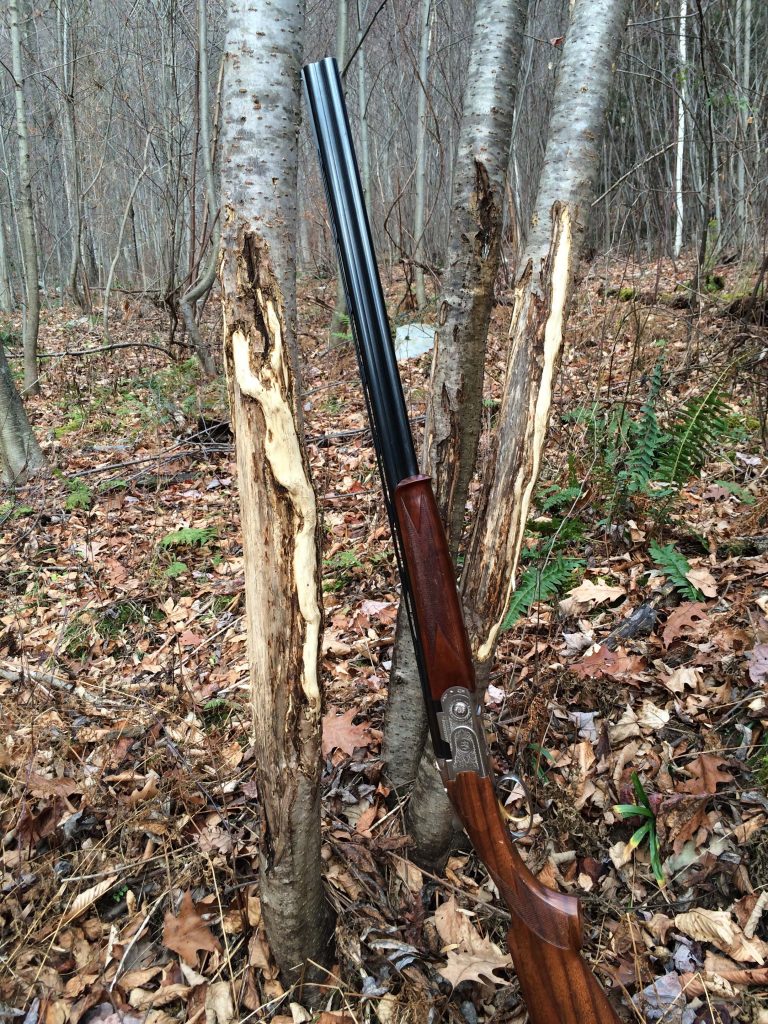Duane: Fresh antler rubs certainly indicate deer seasons are coming soon.
Jeannine: Licking branches, rubs, and scrapes are placed throughout a buck’s home range and are used year-round. Although rub use slows down in the spring and summer due to the sensitive nature of growing antlers.
Duane: The implementation of Pennsylvania’s antler point restrictions (APRs) in 2002 gave us lots of opportunities as researchers to better understand numerous aspects of deer behaviors and population characteristics like changes in dispersal rates, dispersal movements , and survival.

At the time, a Ph.D. student, Eric Long, was curious if rub behavior might change. Specifically, would we observe an increase in buck rubs and could he measure that change after APRs were implemented? At the time, there was little literature on the subject, although there was in interesting paper from Georgia.
Jeannine: I don’t know why rub density rises to the level of research investigation but I’m sure it has something to do with society’s antler obsession. In this particular paper, rub density was estimated on 5 wildlife management areas. It varied from 183 to 580 rubs per square kilometer (or 7.4 to 23 for every 10 acres). Rub density was correlated with the density of bucks 2.5 years old or older.
Forty-seven species of trees were rubbed. And while a high percentage of rubs occurred on red maple, flowering dogwood, and Virginia pine as they were the most abundant in the area, a closer look revealed that a high degree of species selection was occurring. The percentages of alders, cherries, Virginia pine, Eastern juniper, white pine, common witchhazel, and striped maple rubbed exceeded their availability in the environment.
Greater than 78% of rubs were made on trees less than an inch in diameter. The paper even describes rub characteristics like mean length! The anatomy of a rub was thoroughly investigated.
Hunting for Rubs
Duane: Eric decided to do a pilot study to see how much effort it would take to estimate the density of buck rubs. He identified 25 square miles on the Moshannon State Forest where he walked 19 transects that were each 1.25 miles long – that’s 23.5 miles!
Jeannine: Oh, come on. That’s less than a marathon, which I’ve run so I know exactly how far it is.
Duane: He laid out his transects as squares so he ended where he started. Along the way, he recorded where he found rubs and how far they were from the transect line.

With that information, he could estimate the density of rubs on that 25 square miles.
It turns out he estimated 8.3 rubs per every 10 acres. Extrapolating to the complete 25 square miles, he estimated there were 13,284 rubs!
Miles of Math
Jeannine: This section is specifically for statistic nerds like Duane. If you are not like Duane (i.e. the majority of the population, including me), you can probably skip this part.
Duane: Eric’s next quest was to estimate how many miles he would have to walk to detect a reasonable change in buck rub density.
The way to approach this problem is to look at the precision of your estimate from your pilot data then figure how much you need to increase your sample size to get the desired precision. There are some fun equations for figuring this out! Like these:

Jeannine: I warned you, didn’t I?
Duane: From Eric’s pilot data, the coefficient of variation (CV) was 0.23 (= standard error divided by estimate) and he wanted a CV of 0.10. To get that level of precision he estimated he would need to walk 175 miles!
Jeannine: That IS longer than a marathon.
Did Buck Rub Density Change with APRs?
Duane: We don’t know. We decided that walking 175 miles was not worth the effort!
Jeannine: Not worth the effort to answer a question that really doesn’t matter – good decision.
Duane: Agreed. But here’s some interesting fun facts:
- The furthest Eric detected a rub from the transects he walked was 175 feet.
- He found 210 rubs walking 23.5 miles.
- The largest diameter tree that was rubbed was 3.3 inches in diameter.
- The average tree diameter was 1.14 inches.
- He detected, on average, 8.9 rubs per mile walked.
Jeannine: Was there a species preference? I want all the fun facts.
Duane: Eric didn’t collect tree species information, nor did he measure the length of rubs.
Jeannine: Bummer.
Why is it so Difficult?
Duane: The difficulty with estimating buck rubs is that they are clumped in distribution. Anyone who has looked for buck sign knows this. If you can find a buck travel route, you can find lots of rubs. But Eric’s objective was to walk randomly chosen transects to estimate rub density across tens of square miles.
Jeannine: Failure at estimating rub density is pretty low stakes but it does illustrate the difficulty in estimating other clumped populations or resources which could have far greater conservation and management implications.
Duane: Eric’s approach was not efficient for finding rubs but was the best he could do for estimating rub density – unless he was willing to try some other more complicated sampling design. Even then, I’m sure he’d have to walk way more than 23 miles!
Jeannine: What’s wrong with that?
-Duane Diefenbach and Jeannine Fleegle
